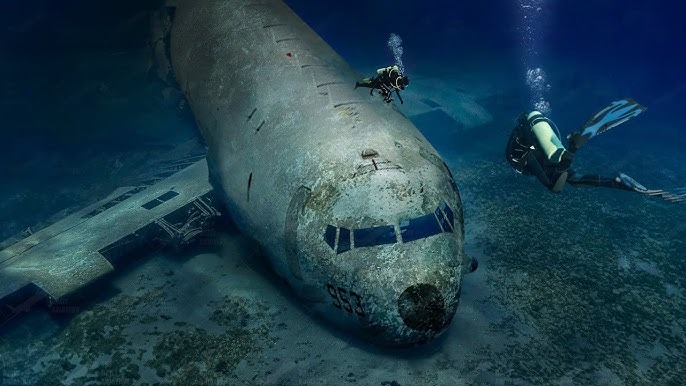In recent weeks, viral posts and videos have circulated widely across social media platforms, claiming that a passenger aircraft missing for over 40 years has been discovered intact in the Sahara Desert, with all 92 passengers still alive and allegedly “untouched by time.”
While captivating and mysterious, this story is entirely unsubstantiated and lacks support from any reputable aviation authority, news agency, or scientific institution.
Why the Story is Implausible
The claim suggests that an aircraft vanished in the 1980s and reappeared decades later, in pristine condition, with all passengers alive. This scenario violates basic principles of aviation science, human physiology, and environmental survival.
Here’s why:
- No missing aircraft with 92 people is unaccounted for in aviation records. The International Civil Aviation Organization (ICAO) and National Transportation Safety Board (NTSB) maintain public records of all commercial aircraft incidents. There is no documented case matching the scenario described.
- Human survival in the Sahara Desert for 40 years without support is biologically impossible. The region experiences extreme temperatures—over 45°C (113°F) in the summer—with little to no access to water or shelter. Prolonged survival without resources or contact is not supported by medical science or survival data from agencies like the World Health Organization (WHO) or Centers for Disease Control and Prevention (CDC).
- Aircraft deteriorate over time, particularly under extreme environmental conditions such as intense heat, sand erosion, and humidity. According to the FAA, even grounded aircraft in desert environments require regular maintenance to prevent structural damage.

Real Cases of Long-Missing Aircraft
While the idea of an airplane reappearing after decades sounds fictional, history has recorded several real-life aviation mysteries, albeit with tragic or explainable conclusions:
1. Malaysia Airlines Flight MH370 (2014)
The most internationally recognized modern aviation mystery, MH370 disappeared en route from Kuala Lumpur to Beijing with 239 people on board. Despite extensive global search operations, only debris has been recovered—no intact fuselage or survivors have been found.
Source: BBC, ICAO
2. Uruguayan Air Force Flight 571 (1972)
This flight crashed in the Andes Mountains. Sixteen of the 45 people on board survived by enduring extreme cold, avalanches, and starvation for 72 days before rescue. Their story is one of resilience and documented survival, often misused in viral legends.
Source: History Channel
3. Star Dust (1947)
A British South American Airways aircraft disappeared in the Andes and wasn’t found until 1998—over 50 years later. The remains of the aircraft were discovered embedded in a glacier. Sadly, all onboard had perished, and the aircraft was never “intact” or preserved in a state resembling the viral Sahara claim.
Source: CNN

Understanding the Sahara: Survival and Geography
The Sahara Desert spans over 9 million square kilometers across North Africa and is one of the harshest environments on Earth. According to NASA, temperatures range from -4°C at night to over 50°C in the day, and access to water is scarce.
If a plane had crashed or landed in the Sahara, satellites or aviation surveillance technology would likely have picked up evidence via satellite imagery, especially in the modern era of remote sensing and GPS.
Moreover, any group of 92 people surviving for decades would have required food, clean water, shelter, and medical attention—all of which would be impossible to sustain unnoticed for four decades.

How Hoaxes and Urban Legends Spread
This particular story shares common traits with other urban legends:
- Sensational wording: “Untouched by time,” “found intact,” “92 passengers alive” are phrases designed to evoke awe and curiosity.
- Lack of official sources: No mention of the airline name, date, location coordinates, or agency confirmation.
- Recycled imagery: Many viral videos use images from unrelated plane crashes or movie sets, often modified with AI tools or photo editing software.
According to a 2021 MIT study published in Science, false news spreads more rapidly than truth on social media, especially when it triggers strong emotional responses.
Fact-checking platforms like Snopes, AFP Fact Check, and Reuters Fact Check have repeatedly debunked similar viral aviation stories in the past.

The Importance of Verifying Information
To ensure accurate understanding, always cross-check shocking claims with:
- ICAO Accident Investigation Reports
- FAA Incident Databases
- BBC, CNN, and Reuters
- NTSB Official Website
- Google Fact Check Explorer
What to Do When You See Sensational Headlines
Here are a few steps to help identify misinformation:
- Check the source: Is the story published by a known media organization?
- Search for keywords: Try searching the event using keywords on news aggregators like Google News or Bing News.
- Consult aviation databases: If it’s a plane crash or discovery, it will appear on databases managed by the NTSB or ICAO.
- Look for supporting photos or video from credible reporters: News of such magnitude would be covered extensively.

Conclusion: Fascination Doesn’t Equal Fact
While it’s natural to be intrigued by mysterious tales, especially ones involving long-lost planes and miraculous survival, it is essential to distinguish fiction from reality. As of May 2025, there is no verified case of an aircraft disappearing for 40 years and reappearing in the Sahara Desert with passengers alive.
Responsible content consumption means asking questions, checking facts, and understanding how misinformation spreads. In an age of AI-generated stories and viral hoaxes, truth remains our best compass.
